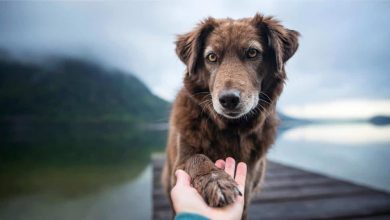Uncovering the Cost of a Dog Endoscopy: What You Need to Know

1. Introduction to Endoscopy for Dogs
Endoscopy is a medical procedure used to examine the internal organs and tissues of animals, including dogs. It is a less invasive alternative to surgery and can be used to diagnose and treat various conditions. Endoscopy is an important tool in veterinary medicine, as it allows vets to accurately diagnose and treat certain conditions without having to perform surgery. In this article, we will discuss what an endoscopy is, why it may be necessary for your dog, how the procedure is performed, potential risks and side effects, cost of an endoscopy for dogs, how to find a qualified vet to perform the procedure, tips to reduce the cost of an endoscopy for your dog, and more.
2. What is an Endoscopy?
Endoscopy is a medical procedure that involves inserting a small camera into the body through a tiny incision or natural opening. The camera transmits images of the inside of the body onto a monitor so that doctors can see what’s going on inside without having to make large incisions or perform exploratory surgery. This minimally invasive approach allows doctors to diagnose and treat various conditions without causing unnecessary pain or risk of infection.
3. Reasons for Undergoing an Endoscopy
There are several reasons why your vet may recommend that your dog undergo an endoscopy. These include:
• Diagnosis of gastrointestinal problems such as ulcers or tumors
• Diagnosis of respiratory problems such as pneumonia or bronchitis
• Diagnosis of urinary tract infections
• Removal of foreign objects from the digestive tract
• Biopsy sampling from internal organs
• Removal of polyps or tumors from internal organs
• Taking tissue samples for further testing
4. Preparation and Procedure of an Endoscopy
Before performing an endoscopy on your dog, your vet will need to do some preparation work such as taking blood tests and performing other tests as needed. Your vet may also prescribe medication in order to reduce any discomfort during the procedure. During the actual procedure, your dog will be given general anesthesia so that they remain still while the doctor performs the endoscopy. The doctor will then insert a thin tube with a camera attached into one of your dog’s natural openings or through a small incision in their skin in order to view their internal organs on a monitor outside their body. Depending on what needs to be done during the procedure, instruments may also be inserted through this tube in order to take tissue samples or remove foreign objects from within their body cavity if necessary.
5. Potential Risks and Side Effects of Endoscopy in Dogs
As with any medical procedure there are potential risks involved with endoscopic procedures on dogs including infection at the site where the scope was inserted into their body, bleeding due to biopsy sampling or removal of polyps/tumors from within their body cavity, damage caused by instruments used during procedures such as puncturing organs inadvertently while taking tissue samples etc., reactions due to medications given before/during/after procedures etc.. It’s important that you discuss all possible risks with your vet before allowing them to proceed with any endoscopic procedures on your pet dog so that you can make an informed decision about whether it’s safe for them or not based on their individual health condition at that time.
6. Cost of an Endoscopy for Dogs
The cost of endoscopic procedures for dogs varies depending on several factors such as where you live (costs tend to be higher in larger cities), type/length/complexity etc..of procedure required (longer/more complex procedures cost more than shorter/simpler ones), type & brand name instruments used (some brands are more expensive than others), whether anesthesia has been administered etc.. Generally speaking however,expect costs ranging anywhere between $500 – $2000 depending on all these factors mentioned above.
7. How To Find A Qualified Vet To Perform The Procedure
When looking for someone qualified enough & experienced enough in performing endoscopic procedures on dogs,it’s important that you check out references & credentials thoroughly before allowing them near your pet.Ask specifically about experience & success rates with similar cases,inquire about types & brands instruments they use,ask questions regarding safety protocols they follow,read reviews online if available etc.. All this information should help you make sure you’re entrusting your pet’s health only into capable hands.
8 Tips To Reduce The Cost Of An Endoscopy For Your Dog
Although expensive,there are ways by which you can reduce costs associated with getting an endoscopic procedure done for your pet :
• Ask around – Check out different vets who specialize in performing these types of procedures & compare prices before deciding who best fits within budget constraints.
• Look out For Discounts – Many veterinary clinics offer discounts & promotional offers periodically throughout year which could help bring down overall costs significantly.Be sure not miss out!
• Consider Pet Insurance – If available,consider getting pet insurance specifically tailored towards covering medical expenses like these.This could save money significantly over long run.
• Ask About Payment Plans – Many vets offer flexible payment plans which could help spread out costs over period time thus making it easier manage financially.
• Research Online – Do research online about different types treatments available & compare prices offered by different clinics before making final decision.
9 Conclusion
Endoscopic procedures can provide valuable insight into diagnosing & treating various ailments afflicting our beloved pets without having resorting surgery every time.However,they come at significant cost which can put strain finances if not managed properly.. Hopefully tips provided above should help reduce overall costs associated with getting one done while still ensuring quality care being provided pup!


